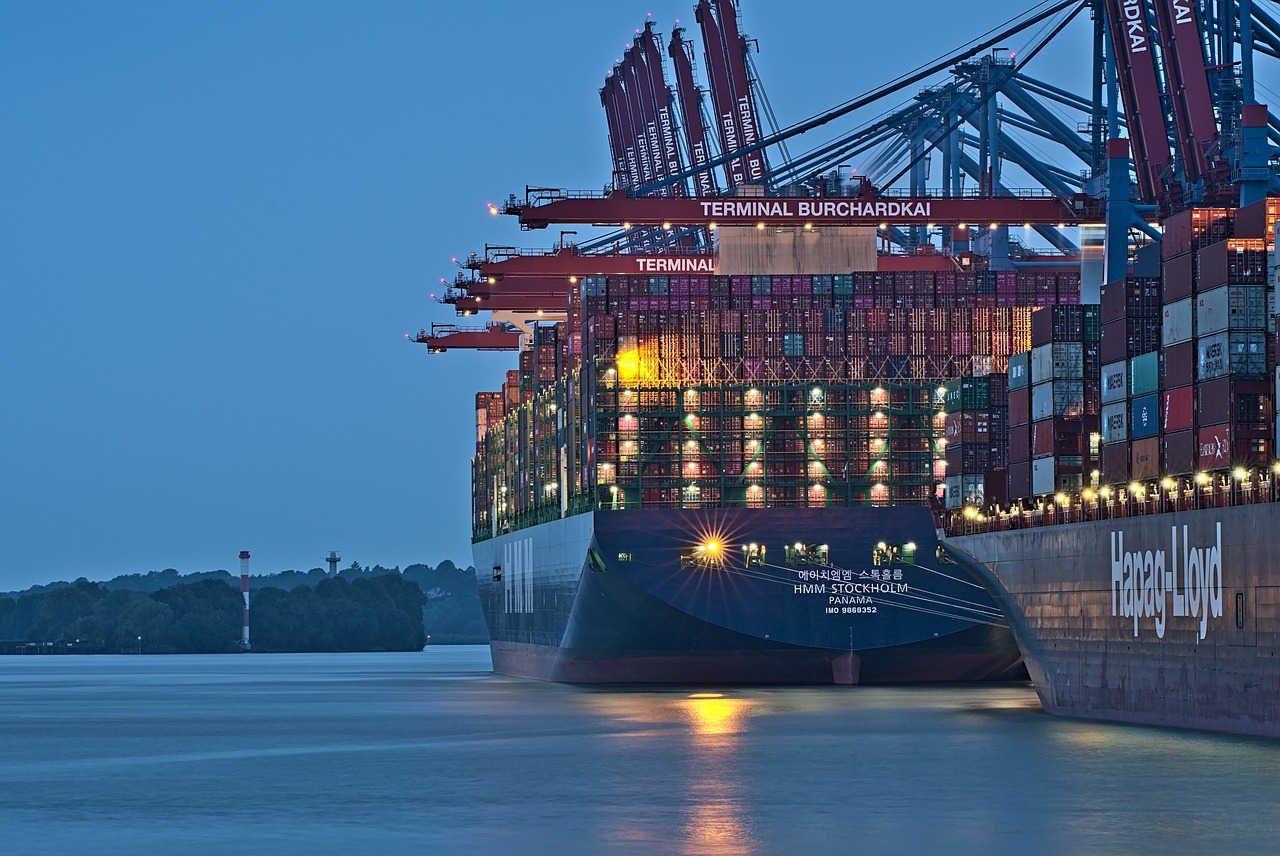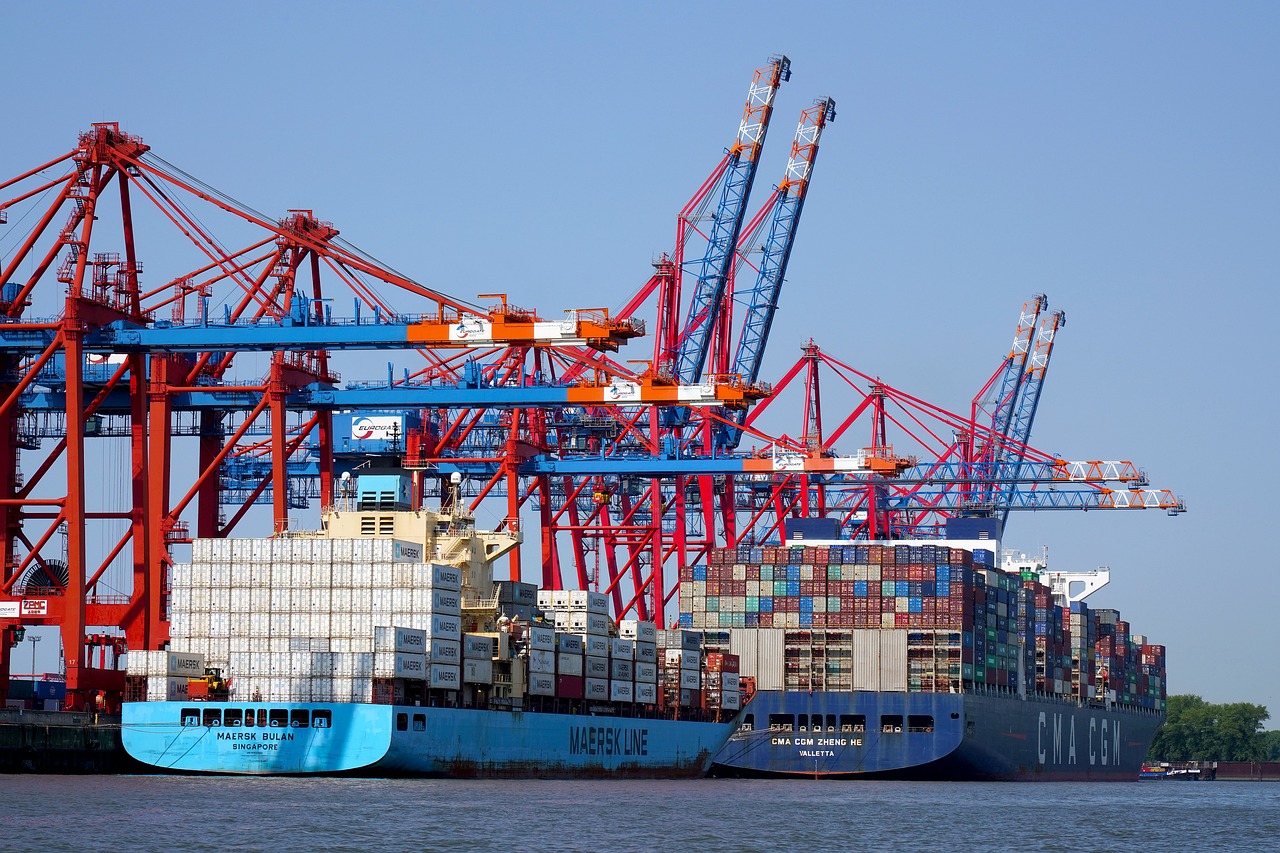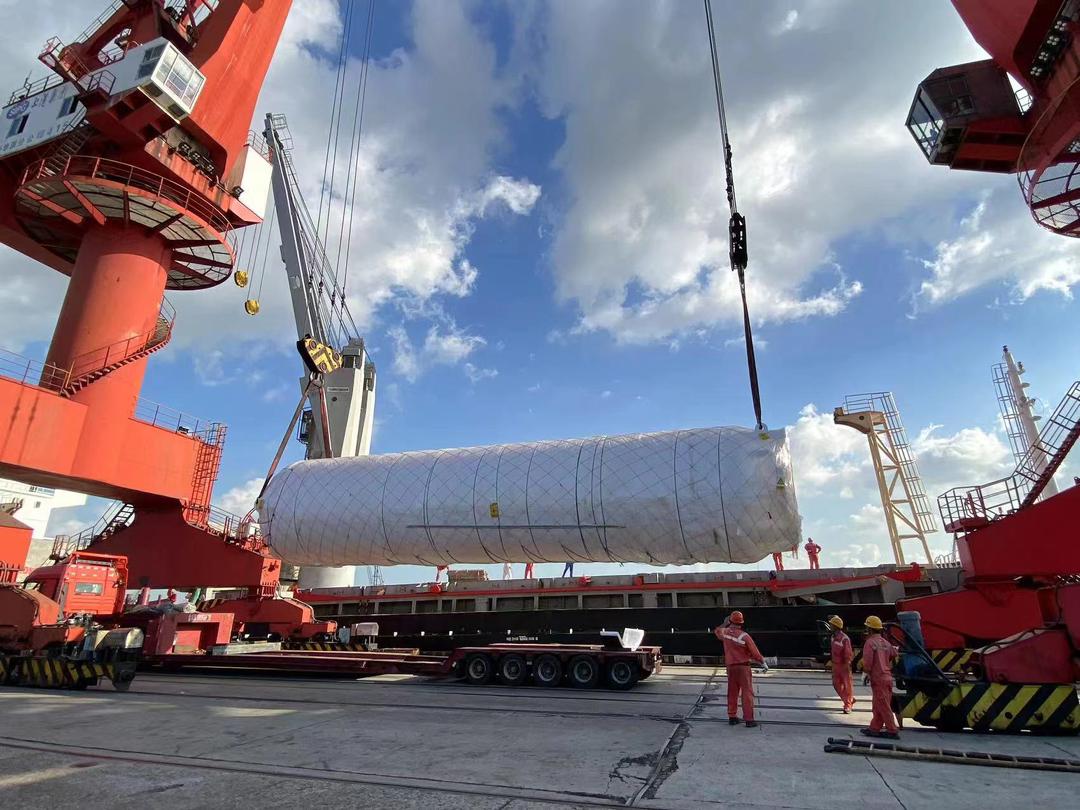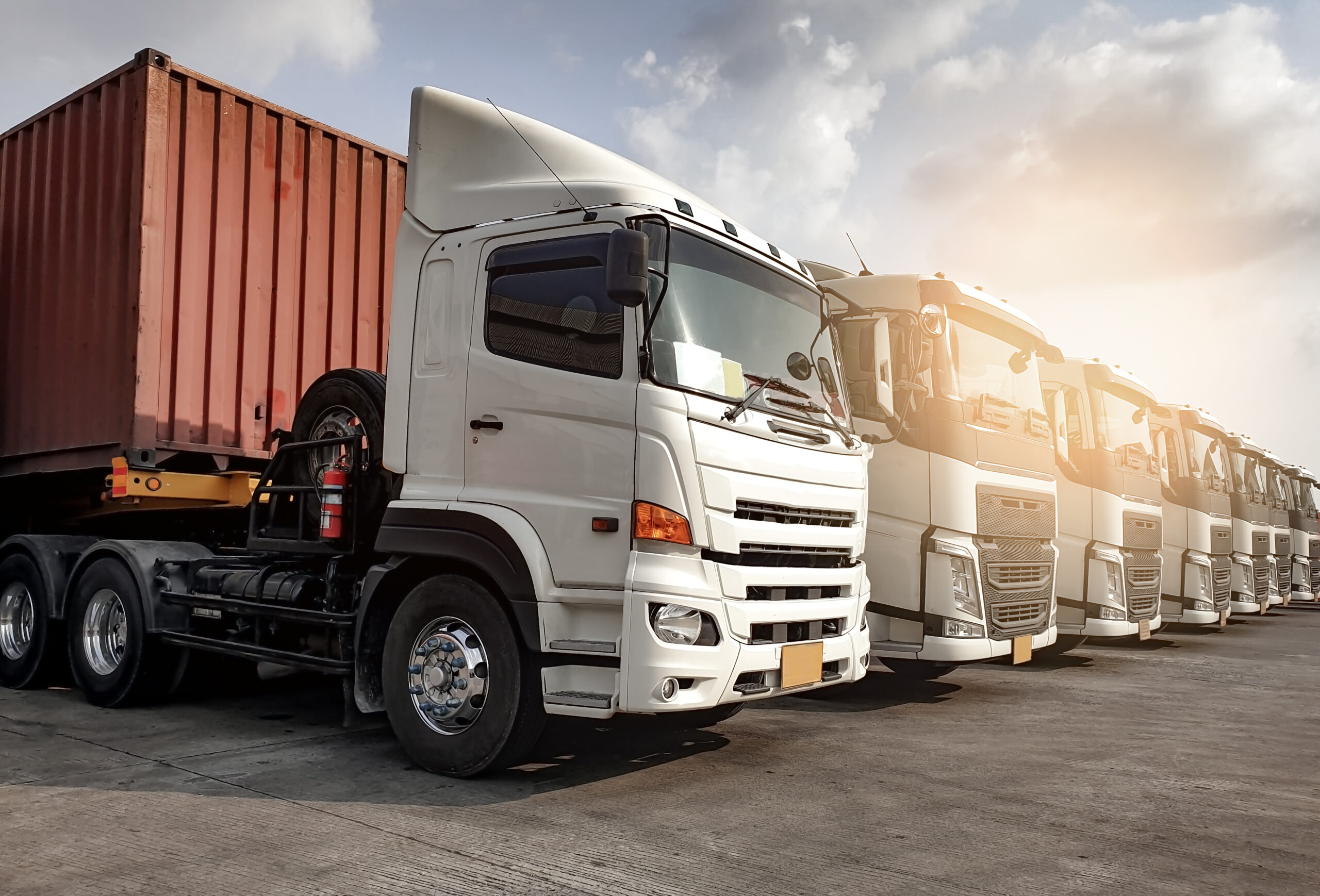
International airfreight service involves the transportation of goods by air between countries. It is a crucial component of the global supply chain, providing a rapid and efficient means of shipping various types of cargo, including raw materials, finished goods, perishable items, and high-value products.
We offer door-to-door delivery, providing a comprehensive logistics solution from the shipper’s location to the recipient’s destination, with speed and efficiency. Goods can be transported across continents in a matter of hours or days.
In order to provide a global network for transporting air cargo, we are working with dedicated air cargo carriers, which may include all-cargo airlines or divisions of passenger airlines that operate cargo flights. These carriers use a fleet of cargo aircraft designed to handle different types of cargo.
Other than general cargo, international airfreight can also accommodate temperature-sensitive cargo with specialized containers and facilities. Some services also cater to the transportation of oversized or hazardous cargo.

International sea freight in transportation refers to the movement of goods between countries via ocean vessels. It is a fundamental component of global trade and supply chain logistics, offering a cost-effective and efficient means of transporting large volumes of goods over long distances.
International sea freight primarily involves the use of cargo vessels, which can include container ships, bulk carriers, tankers, and roll-on/roll-off (RoRo) vessels. Container ships are particularly common and are designed to carry standardized cargo containers.
Containerization is a key feature of international sea freight. Goods are packed into standardized shipping containers, facilitating easy handling, loading, and unloading. Common container sizes include 20 feet (TEU) and 40 feet (FEU).
In FCL (Full Container Load) shipments, a single shipper’s goods occupy an entire container. In LCL (Less than Container Load) shipments, multiple shippers’ goods share a container. FCL is often chosen for larger volumes, while LCL is more suitable for smaller shipments.
Transit times for sea freight are longer compared to air freight but are often more cost-effective, especially for bulk shipments. The duration of the journey depends on the distance between the origin and destination, as well as the specific trade route.
Different types of containers cater to various cargo types. Standard dry containers are used for general cargo, while specialized containers, such as refrigerated containers (reefers) and flat racks, accommodate specific needs like temperature-sensitive goods or oversized cargo.

Land transportation for cargo is an integral part of the global supply chain, working in conjunction with other modes of transportation, such as air and sea freight, to ensure the efficient and timely delivery of goods to their intended destinations. The choice of land transportation mode depends on factors such as the type of cargo, distance, cost considerations, and the specific requirements of the supply chain.
Trucking is one of the most common and flexible modes of land transportation for cargo. Trucks are used to transport a wide range of goods, from small parcels to large shipments. Trucks can navigate various types of roads, providing door-to-door delivery services.
Cargo can also be transported over long distances by trains on railway tracks. Rail transportation is particularly suitable for bulk shipments, such as minerals, chemicals, and manufactured goods. It is known for its efficiency and cost-effectiveness for certain types of cargo.
In some cases, inland waterways are used for transporting cargo by barges or other watercraft. This mode is especially relevant in regions where navigable rivers and canals provide transportation routes.
Land transportation allows for flexible routing based on the needs of the cargo and the available transportation infrastructure. It often integrates with other modes of transportation, creating intermodal solutions for comprehensive cargo movement.

Warehousing involves the storage and management of goods, while distribution focuses on the movement of those goods to end-users or retailers. Both functions are integral to the supply chain, contributing to the efficiency, reliability, and responsiveness of the overall logistics process. Modern supply chains often integrate warehousing and distribution activities to create seamless and agile operations.
Warehousing involves the storage of goods in a facility or warehouse. Warehouses serve as points of storage where goods can be kept before they are needed for distribution, sale, or consumption. The storage may involve short-term holding of inventory or longer-term storage based on demand and supply chain requirements.
Warehouses are responsible for managing inventory levels. This includes tracking stock levels, organizing products, and implementing inventory control measures to prevent stockouts or overstock situations. Warehouses also play a role in order fulfilment. When a customer places an order, the warehouse retrieves the required items from inventory and prepares them for shipping.
Distribution involves the movement of goods from the warehouse to the end-user or retailer. It encompasses the entire process of getting products from the manufacturer or supplier to the final destination. We process incoming orders, which may include picking and packing items based on customer orders or retail demand, include last-mile delivery to end-users.

Customs brokerage, also known as customs clearance, is a specialized service provided by professionals or entities known as customs brokers. This service involves facilitating the clearance of goods through customs authorities when they cross international borders. The goal is to ensure that the import and export of goods comply with the relevant laws and regulations of the countries involved.
We assist importers and exporters in preparing and submitting on behalf the necessary documentation required for customs clearance. This includes invoices, packing lists, bills of lading, certificates of origin, import permit and other relevant paperwork.
We also help to identify the appropriate tariff classification for goods. This classification is essential for calculating duties and taxes and ensuring compliance with trade regulations. After we calculate the duties, taxes, and fees payable on imported goods, we have to ensure that the correct amounts are paid to customs authorities to facilitate the release of the goods.
Acting as intermediaries between their clients and customs authorities, we communicate with customs officials to address any issues, provide additional information, or resolve discrepancies in the documentation. In cases where customs authorities conduct inspections of goods, we coordinate and facilitate these inspections.
We also provide advice to clients on trade agreements, preferential tariff treatments, and other factors that may affect the cost and process of customs clearance. It is important to keep our clients stay informed about changes in customs regulations and trade laws to ensure ongoing compliance.

Effective supply chain management aims to create a seamless, efficient, and responsive flow of goods and information throughout the entire supply chain network. It involves strategic decision-making, coordination among various entities, and the use of technology to enhance visibility and control. A well-managed supply chain contributes to cost reduction, improved customer satisfaction, and increased competitiveness in the marketplace.
Inventory Management: Optimizing your inventory is crucial for maintaining a balance between demand and supply. Our inventory management solutions use advanced technology to forecast demand, reduce excess stock, and minimize stockouts.
Order Fulfilment: We streamline the order fulfilment process, ensuring accuracy and timeliness. From order processing to packing and shipping, our services are designed to enhance the customer experience.
Vendor Management: A well-managed supply chain starts with effective vendor relationships. We help you coordinate with suppliers, monitor performance, and ensure a stable and reliable flow of materials.
3PL (Third-Party Logistics): refers to the outsourcing of logistics and supply chain functions to a third-party service provider. These providers offer a range of logistics services, and companies can engage them to handle specific parts of their supply chain processes.
4PL (Fourth-Party Logistics): involves outsourcing not only logistics functions but also the strategic planning and management of the entire supply chain. A 4PL provider acts as an integrator, overseeing and coordinating multiple 3PLs and other service providers.

Project cargo shipping refers to the transportation of large, heavy, high-value, or complex pieces of equipment or materials that are typically used in industrial projects. Unlike standard cargo, project cargo often requires specialized handling, transportation, and logistics solutions due to its size, weight, and unique characteristics.
Project cargo includes oversized and heavy items used in various industries, such as energy, construction, mining, and manufacturing. Examples of project cargo include large machinery, turbines, generators, construction modules, and components for infrastructure projects.
Detailed route planning and feasibility studies are conducted to determine the optimal transportation route. This may involve surveying transportation infrastructure, assessing port facilities, and identifying potential challenges along the route. Cranes and lifting equipment are used to load and unload these items onto and from vessels or other modes of transportation.
Successful project cargo shipping requires effective project management. This involves coordination with various stakeholders, including shippers, carriers, port authorities, and customs officials, to ensure a smooth and timely execution of the project.
Due to the unique challenges associated with project cargo shipping, risk management is a critical aspect. This includes assessing potential risks, implementing safety measures, and having contingency plans in place to address unforeseen challenges.

Breakbulk shipping refers to the transportation of goods that are not containerized but are loaded individually or in groups onto a vessel. Unlike containerized shipping, where goods are packed into standardized containers, breakbulk shipping involves the handling of cargo in its original form, such as crates, barrels, drums, pallets, and machinery. This includes oversized machinery, heavy equipment, steel coils, project cargo, and other irregularly shaped items.
Cargo in breakbulk shipping is loaded and unloaded piece by piece or in bundles, rather than being lifted as a single unit (container). This requires specialized equipment such as cranes and forklifts for efficient handling at both the port of origin and destination.
Vessels used for breakbulk shipping are often equipped with specialized gear such as cranes and ramps to facilitate the loading and unloading of cargo. These vessels are known as general cargo ships or multipurpose vessels.
Breakbulk shipping may involve a higher degree of risk and complexity in terms of cargo handling and securing. However, experienced logistics providers and shippers mitigate these risks through careful planning and adherence to safety standards.

Cross-border trucking refers to the movement of goods by trucks across international borders. It involves the transportation of cargo from one country to another, typically by road. Cross-border trucking is a critical component of international trade, facilitating the efficient movement of goods between neighbouring countries or regions.
We can offer services of full truckload (FTL) or less-than-truckload (LTL). The choice of mode depends on the volume and nature of the cargo. Routing of shipment can cover from Singapore, Malaysia, Thailand, Cambodia, Vietnam, and into the entire China.
Customs clearance is a crucial aspect of cross-border trucking. Trucks need to go through customs procedures at both the origin and destination countries. This includes the submission of relevant documentation, inspection of goods, and payment of duties and taxes.
Cross-border trucking aims to be efficient and timely, enabling the quick movement of goods between countries. Delays can occur due to customs processing, inspections, or other factors, so logistics providers aim to optimize processes.
Efficient cross-border trucking is crucial for supporting global supply chains and ensuring the timely delivery of goods to their destinations. It requires coordination among logistics providers, customs authorities, and other stakeholders to navigate the complexities of international trade.

Event and exhibition logistics refer to the specialized services and coordination involved in the planning, transportation, setup, and management of logistics for events, trade shows, exhibitions, conferences, and other large-scale gatherings. This field of logistics is tailored to meet the unique requirements of events where companies showcase their products, services, or ideas to a targeted audience.
Detailed planning is essential to ensure that logistics services align with the specific needs of the event. This includes coordination with event organizers, exhibitors, and other stakeholders.
We can handle the transportation of exhibition materials, booths, promotional items, and other necessary equipment from the exhibitor’s location to the event venue. This may involve road transport, airfreight, or other modes of transportation.
Most of the time, we would handle customs clearance through ATA Carnet to ensure that exhibition materials cross borders smoothly. This includes preparing and submitting the required customs documentation for both import and re-export of the goods.
We can offer on-site coordinators to oversee the smooth handling of materials during setup, the event itself, and the teardown process. They address any logistical challenges that may arise during the event.
After the event, we can manage the return of exhibition materials to the exhibitor’s location. This includes coordinating the transportation and handling of materials to their designated destinations.

Logistics solutions for e-commerce are designed to meet the unique challenges of the online retail environment. These solutions aim to streamline the movement of goods, optimize inventory management, and enhance the overall efficiency of e-commerce supply chains.
E-commerce Fulfilment Centres: Specialized fulfilment centres strategically located for quick and cost-effective order fulfilment.
Multi-channel Distribution: Coordinating inventory across multiple sales channels, including online marketplaces and the e-commerce platform.
Warehouse Management Systems (WMS): Implementing WMS for better inventory visibility, order tracking, and warehouse optimization.
Pick and Pack Services: Efficient picking and packing of products based on customer orders.
Last-Mile Delivery: Offering fast and reliable last-mile delivery options to meet customer expectations.
Reverse Logistics: Managing the return process efficiently, including product inspection, restocking, and customer refunds or exchanges.
Real-Time Inventory Tracking: Using technology to monitor inventory levels in real-time.
International Shipping Solutions: Facilitating cross-border e-commerce through efficient international shipping and customs clearance.

Cross-trade shipment, often referred to as cross-trade logistics or cross-trade shipping, involves the transportation of goods between two countries by a logistics provider or freight forwarder without the cargo entering the home country of the logistics provider. In other words, the shipment takes place between two foreign countries, and the logistics provider facilitates the entire process without the goods passing through its home country.
We would manages the transportation, customs clearance, and documentation required for the shipment. This often involves coordinating with multiple parties, such as carriers, customs authorities, and other service providers in the countries of origin and destination.
Cross-trade shipments can be beneficial in situations where the logistics provider has expertise or a strong network in specific regions. It allows for more flexibility and cost efficiency in arranging international shipments without the need for the goods to return to the logistics provider’s home country.

Malaysia’s strategic location in Southeast Asia positions it as a hub for international trade, foreign investors can be beneficial from easy access to global markets through a well-established supply chain network.
We understand the complexities of expanding operations into a new market. Our comprehensive FDI consultation service is designed to guide and support investors through every step of the manufacturing setup process in Malaysia.
Application of Manufacturing license through MIDA (Malaysian Investment Development Authority), as well as to obtain Tax-free Incentives, Grants, Expatriate permit, Exemptions on import duty and tax, etc.
Application of LMW (Licensed Manufacturing License) with Royal Customs Malaysia, which enable the company to enjoy the benefits similar to FIZ (Free Industrial Zone).
Application of Import license and permits with various authorities:

Cargo marine insurance is essential for mitigating the financial risks associated with the transportation of goods across international waters. It provides peace of mind to businesses and individuals involved in global trade by offering financial protection in the face of unforeseen events that could lead to loss or damage to shipped goods.
We can provide cargo marine insurance which covers loss or damage to goods during various stages of the shipping process, including loading, transit, unloading, and storage.
Perils of the Sea: Coverage for natural events such as storms, hurricanes, and other perils that are inherent to sea transportation.
Fire and Explosion: Protection against fire or explosion incidents that may occur during the voyage.
Theft and Pilferage: Coverage for theft or pilferage of goods during transit.
General Average: Protection in the event of a general average situation, where sacrifices or expenditures are made for the common safety of the ship and cargo.
In the event of a covered loss or damage, the insured party (shipper) can file a claim with the insurance provider. The claims process involves providing evidence of the loss or damage, such as bills of lading, inspection reports, and other relevant documentation.

At MGL Global Logistics, we are more than just a logistics company. We are a partner to our clients, helping them to achieve their business goals by providing reliable logistics solutions that maximize their potential. Contact us today to see how we can help you take your logistics to the next level.
Copyright © 2024 MGL Global Logistics Sdn. Bhd 202301021464 (1515387-U) | Website Managed By Lucianize
WhatsApp us